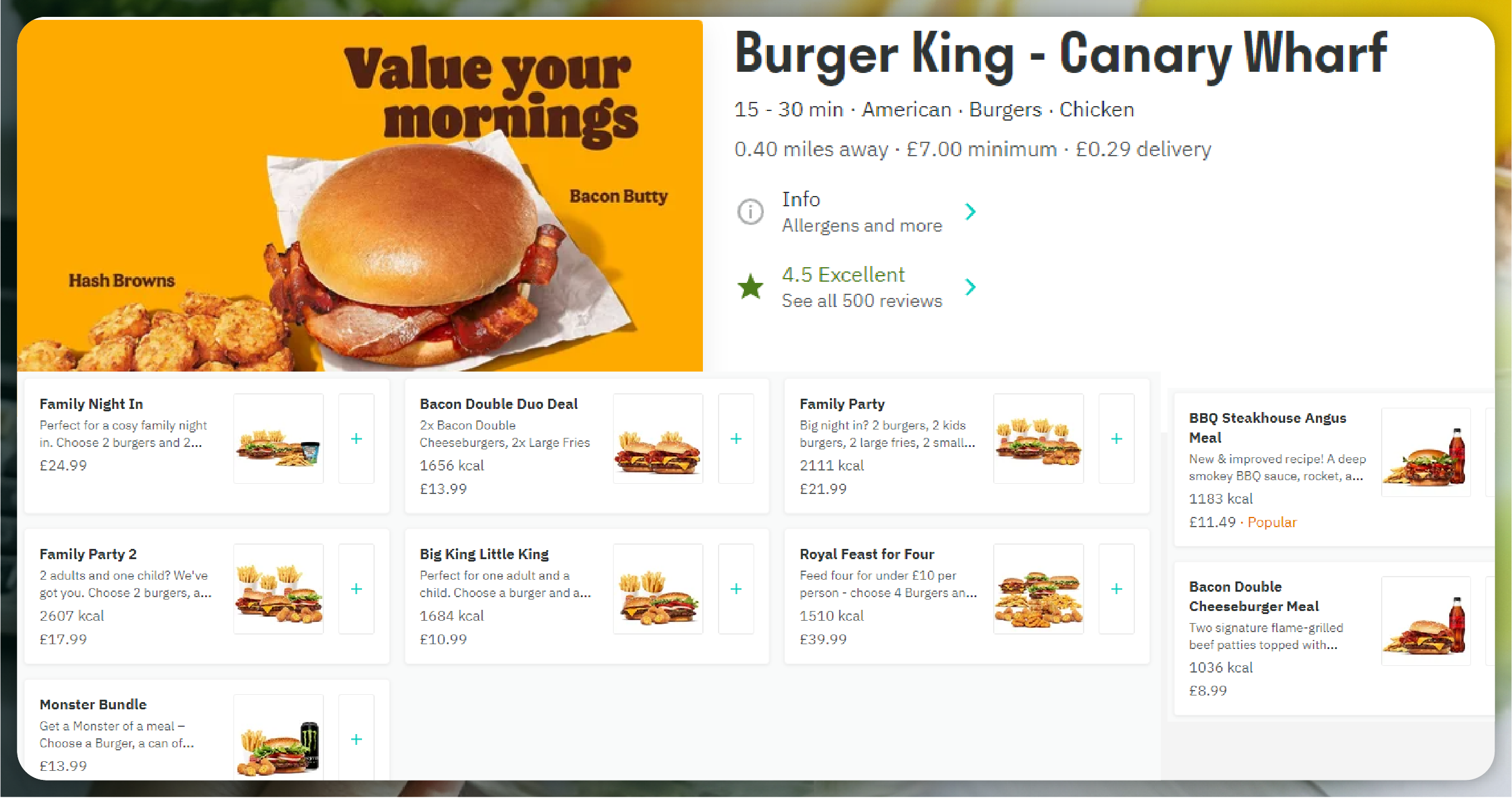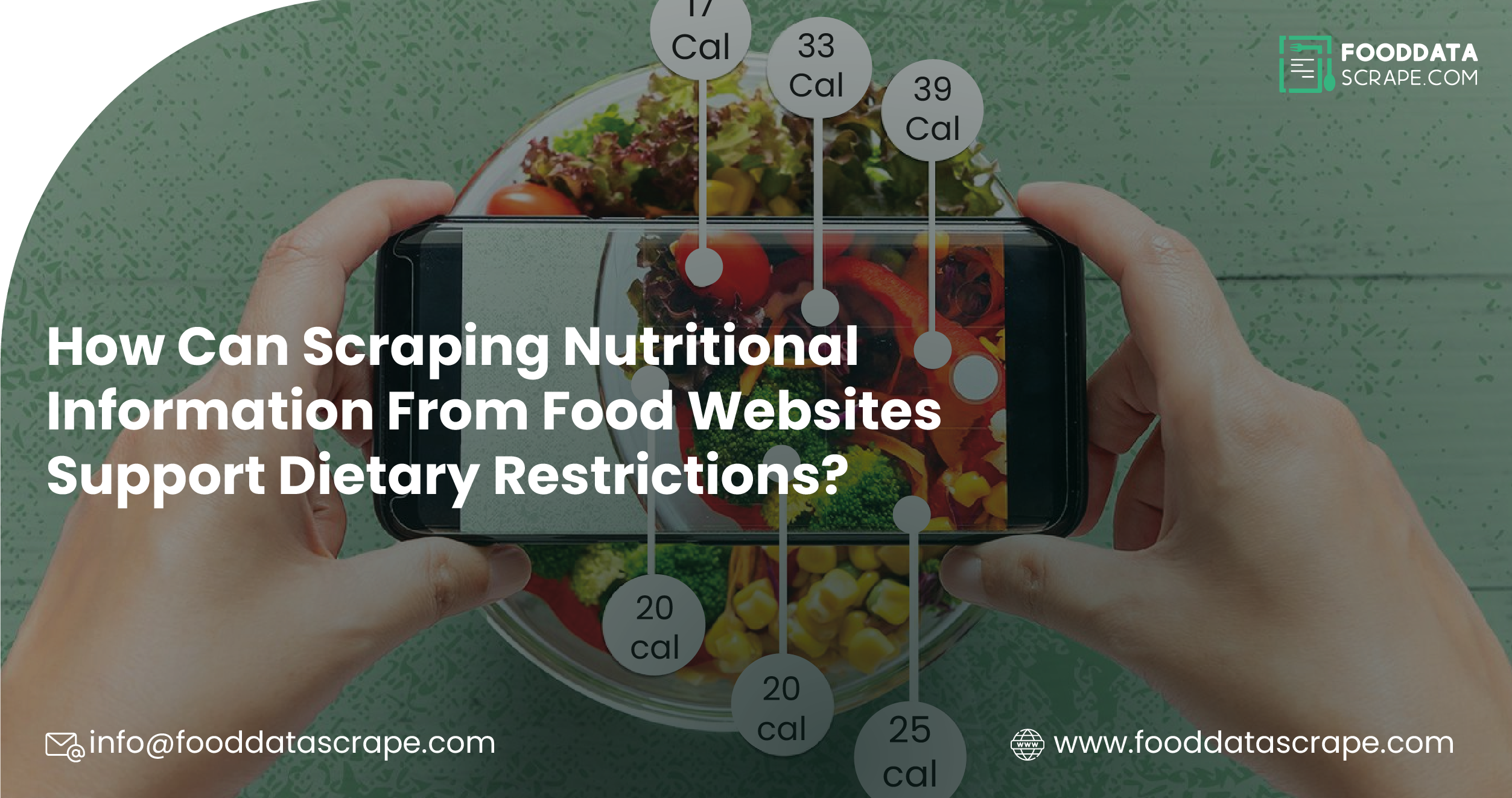Consumers today are increasingly becoming health and fitness conscious. Therefore, the demand for specific knowledge about the nutritional composition of food products is increasing daily. Restaurants are innovatively expanding their menus and changing items. With such innovative access to detailed nutritional data, they have become a must. Scraping Nutritional Information from Food Websites lets us give the relevant details concerning menu items so that consumers know their options. This method involves collecting nutritional data on food products so that it would be relevant and accurate. Extracting nutritional data from food items reflects calorie content, macronutrient distribution, and other metrics of interest. This knowledge and data thus empower the consumer and support the health professional and the dietician in their work with diet planning. However, the ethical implications of web scraping include obeying the terms of websites and data integrity as we seek to provide accurate nutritional insights to the public.
The Importance of Nutritional Information

The importance of nutritional information lies in its ability to help consumers make informed, healthier food choices. By understanding calorie counts, macronutrients, and allergens, individuals can tailor their diets to meet personal health goals and manage dietary restrictions effectively.
- Health Consciousness: There has recently been a trend in healthier ways of eating. A healthy-conscious consumer will most likely read those nutritional labels and seek information on their foods. This led to the evolution of numerous diet plans, such as ketogenic, paleo, and vegan diets, among others, all often routed within the confines of a specific break-up of macronutrients. Consequently, with accurate nutrition facts, consumers can make choices that answer their dietary needs and health requirements. Food Data Extraction for Nutritional Analysis is fast becoming necessary for anyone interested in knowing his diet.
- Compliance with Dietary Restrictions: Most individuals have dietary restrictions based on diagnosed medical conditions or preferences, such as gluten intolerance, lactose intolerance, or food allergies. The certainty of Web Scraping Nutritional Data regarding allergens and other comparable measures will provide consumers with information enabling them to safely and healthily consume their food outside the home. This will be a significant requirement for those whose food is monitored at very close levels.
- Empowering Health Professionals: Accurate nutritional data will form the basis for nutritionists and health professionals when providing their patients with better food choices. Nutrition facts food data scraping provides great nutritional information from many restaurants, thus helping health professionals recommend appropriate options aligned with individual dietary needs. This method improves the quality of advice that may be given by the professionals involved.
It means food Product Nutrition Data Scraping initiatives have the potential to substantially impact public health, not just by encouraging an informed diet choice but also by identifying trends and gaps in nutrition offerings.
Types of Nutritional Information

Understanding different types of nutritional information, such as calorie counts, macronutrients (proteins, fats, carbohydrates), and micronutrients (vitamins, minerals), is crucial for informed eating. This data helps individuals make balanced food choices, supporting overall health, fitness goals, and dietary preferences.
- Caloric Count: One of the most sought-after pieces of nutritional data is the calorie count of menu items. This information helps consumers gauge their daily caloric intake and manage their weight. Web Scraping for Food Nutrition Data allows us to gather this data efficiently, ensuring users easily access calorie information across various restaurants.
- Macronutrient Breakdown: The macronutrient breakdown is vital for those who monitor their protein, fat, and carbohydrate intake. A well-balanced diet includes the right micronutrients to support overall health. Using nutritional food data extraction from food websites, we can provide insights into how different menu items contribute to a balanced diet.
- Proteins: Proteins are essential for muscle growth and repair, making them crucial for individuals engaged in physical activities. Extract food nutrition data to note the protein content in each menu item, as it can vary significantly from one dish to another.
- Fats: Understanding the fat content in foods is essential, especially for those following low-fat diets or concerned about heart health. By providing details on the types of fats present in menu items—such as saturated, unsaturated, and trans fats—we can help consumers make informed decisions about their food choices. This process can effectively utilize Food Data Mining for Nutritional Facts.
- Carbohydrates: Carbohydrates are the body's primary energy source, but not all carbohydrates are created equal. It's important to distinguish between simple and complex carbohydrates and to highlight the fiber content in menu items. This information can guide consumers in choosing healthier carbohydrate options. We can achieve this by utilizing tools to scrape nutrition data from various sources.
- Micronutrient Information: Micronutrients, such as vitamins and minerals, are crucial for overall health. Nutrition Information Scraping for Food Products should include information on key micronutrients found in menu items, such as vitamin A, vitamin C, calcium, and iron. This data helps consumers understand the nutritional value of their meals.
- Serving Sizes: Accurate serving sizes are essential for interpreting nutritional information. A dish that may seem healthy in one serving could become less so if the portion is significantly more significant than average. By providing serving size data, we ensure that consumers have context for the nutritional information they receive.
- Serving Sizes: Accurate serving sizes are essential for interpreting nutritional information. A dish that may seem healthy in one serving could become less so if the portion is significantly more significant than average. By providing serving size data, we ensure that consumers have context for the nutritional information they receive.
- Allergen Information: Allergen information is critical for individuals with food allergies or intolerances. Scraping nutritional facts from Open Food Facts regarding common allergens—such as nuts, dairy, eggs, and gluten—enables us to present comprehensive information to help consumers avoid harmful ingredients.
The Process of Scraping Nutritional Information

The process of scraping nutritional information involves selecting reputable websites, extracting relevant data, and organizing it into a structured format. This allows for efficient collection of nutritional details like calories, macronutrients, and allergens, helping consumers and businesses make informed food choices.
Website Selection: Selection of web pages is necessary for the scraping nutritional facts from Open Food Facts or any other trusted website. This web page must display significant and accurate information about menu items on restaurant chains, food blogs, and health sites. Suitable sources are necessary for reliable information about Nutrition Food Data Scraping.
Data Gathering: Once the target websites are identified, the following step involves extracting relevant data. This stage might involve extracting structured data, possibly a table or list of meals and their corresponding nutritional metrics, through Food Delivery Data Scraping Services and probably other web scraping applications.
Data Structuring: After information retrieval, the following step is to structure the data in a user-friendly manner. This can be in a database or a spreadsheet that is easier to analyze and present to customers. An efficient dataset can be queried for retrieval of nutritional information.
Challenges in Scraping Nutritional Information

Challenges in scraping nutritional information include website variability in data presentation, legal and ethical considerations, and the need for maintaining data accuracy. These issues can complicate the process, making it essential to develop effective strategies for reliable and compliant data extraction.
Website Variation: Not all food websites report nutritional information identically. Some report detailed information, and others report only basic information. This variation creates problems in Restaurant Menu Data Scraping with various sources since some data may have to be standardized.
Legal and Ethical Issues: A project designed for web scraping food delivery data would raise legal and ethical issues. The website's terms of service must be followed, and the implications of using the data harvested must be considered. Website owners' permission can be obtained to avoid possible legal problems.
Maintaining Data Accuracy: Since restaurants periodically change their menus and nutritional information, updating the data to reflect more precise information takes a lot of work. Checking, updating, and occasionally improving the scraped data may rely on Food Delivery Scraping API Services to ensure the accuracy and usability of any such information provided.
The Benefits of Scraping Nutritional Information

Scraping nutritional information offers numerous benefits, including empowering consumers to make healthier food choices, aiding health professionals in dietary guidance, and providing restaurants with valuable insights into consumer preferences. This process enhances public health awareness and supports informed decision-making in dietary planning
- Enhanced User Experience: Providing comprehensive nutritional information enhances the user experience for consumers seeking healthier choices. Easy access to this data can encourage diners to choose healthier options and explore new menu items that align with their dietary preferences. Utilizing Food Delivery Intelligence Services can further streamline this process, offering users a seamless experience.
- Data for Research and Analysis: Scraping nutritional information offers valuable data for researchers and analysts studying food trends, dietary habits, and nutritional profiles of restaurant menus. When combined with Restaurant Data Intelligence Services, this information can contribute to broader discussions around public health and nutrition, enabling more informed decisions in the field.
- Supporting Business Decisions: Restaurants can benefit from insights gathered from scraped nutritional data. Understanding consumer preferences and dietary trends can help restaurants tailor their menus to meet the evolving demands of health- conscious diners. Additionally, tools like a Food Price Dashboard can assist in monitoring pricing trends and optimizing menu strategies.
Conclusion:
Scraping Nutritional Information from food Websites is an invaluable resource in today's health-conscious landscape. By gathering detailed data on calorie counts, macronutrient breakdowns, and other relevant metrics, we empower consumers to make informed choices about their food. Despite the challenges posed by variability in website formats and ethical considerations, the benefits of providing comprehensive nutritional information are undeniable. As we move towards a more health-conscious society, the demand for accurate nutritional data will continue to grow, highlighting the importance of scraping this information from food websites.
If you are seeking for a reliable data scraping services, Food Data Scrape is at your service. We hold prominence in Food Data Aggregator and mobile restaurant application scraping with impeccable data analysis for strategic decision-making.






























































































